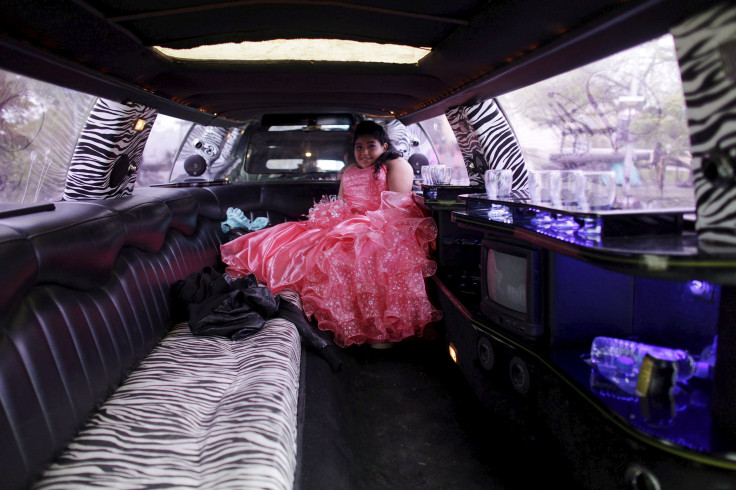Long Island Limousine Accident Exposes Dangerous Flaws In Party Vehicle Safety

To get an idea of how unsafe limousines are, just visualize the instant a Dodge pickup truck plowed into the side of the stretched Lincoln Town Car hired by eight women on Long Island, New York, last Sunday. As the front of the truck broadsided the limo, the passengers sitting on a couch along the left side of the vehicle were flung across the cabin into crumpling steel and shattering glass.
Three of the women, who had been celebrating an upcoming wedding, were killed almost instantly and another died later at the hospital. Six other people, including both drivers, suffered injuries.
The severity of the July 18 accident highlights a regulatory gray area in auto safety. What might have saved the lives of Lauren Baruch, 24, Stephanie Belli, 23, Amy Grabina, 23, and Brittany Schulman, 23, is something that has saved thousands of lives over the years: rules that require cars, trucks and SUVs in the U.S. to have lap and torso seat belts and head-protecting side-curtain airbags.
But in an odd quirk of U.S. automotive safety rules, party limos and buses are exempt from some occupant-protection rules if they have fewer than eight forward-facing seats.
“This is an issue with these party limousines,” said Byron Bloch, an auto safety expert with four decades of experience inspecting accident vehicles and testifying in car crash cases. “If these were regular cars or SUVs you wouldn’t be able to legally sell the vehicles in the U.S.”
A ‘Perimeter-Seating’ Loophole
In 2013, makers of so-called motor coaches -- limousines, entertainment buses and shuttle vans -- convinced the U.S. National Highway Traffic Safety Administration to exempt vehicles with “perimeter seating” -- seats that point inward -- or with fewer than eight forward-facing seats from new rules aimed at bolstering “commercial bus safety.”
The exemption is aimed at allowing makers of airport shuttles and other buses that carry multiple wheelchair positions to forego certain common safety features. But as a result, limousine makers -- which purchase vehicles like Lincolns, cut them in half, elongate them, and alter the interiors to accommodate a more luxurious and spacious atmosphere -- can avoid the cost of adding extra safety belts and air bags to the vehicles. Larger party buses, essentially rolling nightclubs, are also exempt under the guidelines.

Thanks to the length of the stretch limos, nearly one in four accidents involving them are side collisions, according to Lancer Insurance, a leading limo insurer. This makes the lack of side curtain air bags and seatbelts more worrisome.
States could implement their own rules requiring that party limos and buses have seat belts for every seating position, but so far this federal occupant safety exemption is in effect nationwide.
'It's A Contradiction'
Auto safety experts say the exemption is insane.
“These limos are moving bars and rec rooms,” said Bloch. “People are encouraged to stand up, mix and mingle. Their marketing allure is 'continue your party in our limo.' Even if there are seat belts for everyone, promoters of these party bus and limo services are saying it’s safer than driving drunk. But they’re also encouraging you to get up and move around in the cabin. It’s a contradiction.”
Long, heavy and cumbersome to maneuver, a stretch party limo is last type of car you want to be in during an accident -- you could wind up with your head in a television set covered with broken champagne flutes. Last year, the British car program “Fifth Gear” showed the remains of three crash-test dummies after a front-end collision and it wasn’t pretty.
Clarence Ditlow, head of the Center for Auto Safety, a Washington, D.C.-based nonprofit, says for years his group has tried to ring alarm bells over limousine safety. In 2013, five nurses in California burned to death in a limousine fire because they were trapped inside, unable to reach the doors at the back-end of the vehicle with only an opening in the partition that separates the driver from the party.
Ditlow says federal regulators aren’t doing enough to ascertain the general safety of limousines.
“It’s been our long-stated position that the National Transportation Safety Board has been absolutely remiss in tracking limousine accidents,” said Ditlow. “There’s a whole issue about what safety standards should apply to these vehicles.”
The National Limousine Association trade group declined to comment on Sunday’s accident or what its stance is on the seat belt and air bag exemption, but issued the following statement: “The National Limousine Association has long prided itself on having the highest standards of safety, professional training and an unparalleled commitment to take care of our customers”
© Copyright IBTimes 2024. All rights reserved.












